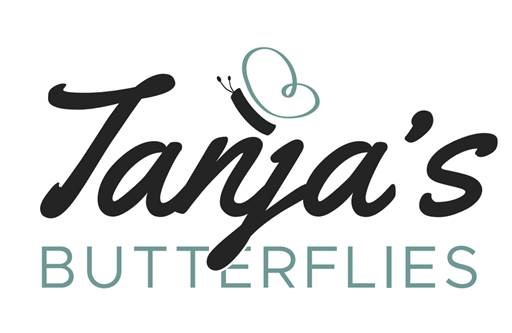
Filters
| Back in 2013, I stumbled across a website called Paper.li that invited you to create your personalized topic-based digital newspaper. It would then feature a couple of articles and tweets on the subjects you selected and provide a nice daily morning read. This is an example of curated content, a phenomenon that has been on the rise for more than a decade now. It can take many forms, ranging from «a single room with a single book» (a tiny bookstore in Ginza that sells only one book per week, hand-picked by its owner) to The Browser, a newsletter featuring five outstanding stories per day from thousends of articles. With individual voices trumping established brands more and more in the war for attention, even big social media players like Linkedin, Facebook and Twitter are responding with new features for creators (more information in the article featured below). To quote Naval Ravikant: «The next stage on the web is the decentralized creator economy.» It is quite obvious that the alarming rate at which content is being created nowadays might eventually lead to a counter-movement of people and businesses cutting through that noise and offering curated content as a service to put our minds at ease. Curated content can act as external filter when you are drowning in a sea of information. However, curating is not at all limited to the digital space. The act of filtering out what is relevant and beneficial for ourselves is essentially a survival strategy – and also in a way defining our life style. In my experience, people differ a lot in regards to how deliberate they are when it comes to choosing what kind of information and impressions they are exposed to. Some are constantly trying to catch up with what’s out there, driven by fear of missing out (FOMO). Some spend a significant amount of time creating and nurturing their own bubbles (which we often see happening on social media channels such as Instagram). Some try to actively shield themselves from certain types of information (like social media or parenting books) and some seem to be even more receptive than others when it comes to absorbing external stimuli. We usually label this last group as highly sensitive people (HSP). «These types have a harder time filtering out potentially extraneous information, so their brains absorb everything. They may be hypersensitive to sounds, bright lights, tastes, and scents, which means they get overstimulated easily. But these people are also often highly creative, detail oriented, and capable of synthesizing diverse information in novel ways.» (Source) I first came across the concept of HSP two years after I had my daughter Maya. As a baby, she would wake me up every 45 minutes at night for breast-feeding, she refused to lay down in a stroller for almost a year, she couldn’t stay by herself for more than a few minutes and until today we are co-sleeping. Later as a toddler, she had trouble wearing any type of clothing with a certain kind of threads or stitches, I had to cut out all the labels in her clothes and guide her through as many as ten major melt-downs a day which were often mirroring my own emotions. This led to quite a few arguments with family members and other people about whether this could still be considered normal, whether she was showing signs of autism, whether she needed more rules and more authoritative parents. Exhausted and worried, I turned to a lot of parenting books until I came across a book called «So viel Freude, so viel Wut» by Nora Imlau, calmly explaining the concept of highly sensitive children which – by the way – are much more common than we think. At least 15% to 20% of all children (and people in general) are estimated to possess a different sensory-processing sensitivity which can be a gift and a burden at the same time. However, by the time we turn into adults many of us have learned to suppress this part of ourselves, to cut down the spectrum of our emotions on both ends in order to fit into what is considered to be the norm. Why am I telling you this? For two reasons: First of all, chances are that among my lovely audience there might be readers who recognize their children, their partner or even themselves in this type of behavior. Who have felt like misfits for their entire life and who are longing for a framework that might both help them feel perfectly normal, yet get to know themselves a little better in regards to their special way of experiencing the world. Secondly, when it comes to sensitivity I don’t believe it’s either black or white, good or bad. When we talk about being highly sensitive this somehow implies that there is another end of the spectrum. However, since words like «high» or «low» immediately seem judgemental, it is hard to have any decent conversation about this topic without people getting very emotional. (The same happens when talking about intellectual giftedness (in German: Hochbegabung) which – by the way – in many cases is correlated to high sensitivity.) I rather tend to believe that there is a spectrum on which we can place ourselves, and it may vary from day to day and depending on which senses you are looking at. At the same time, I am deeply convinced that raising awareness about elevated levels of sensitivity will help many people (and especially children) to stay or get back in touch with the full range of their emotions, be mindful about the filters they mights need and – as a label – might help them create a sense of belonging. In the process of getting to know my daughter, I myself discovered that I am highly sensitive, too, especially when it comes to auditory and visual stimuli. I’d love to spend my days in silence (try that with two toddlers…) and I follow a very strict design concept around the house when it comes to furniture and decorative stuff to not upset myself. Wild colors and patterns literally drive me nuts. Like my daughter I have a very evolved olfactory sense, however my sensitivity when it comes to clothes is not as strong as hers. My empathy level is so elevated that I often cry when I watch a movie, documentary or even the news. There are entire days my head is under water and I just seem to sink into some dark place. That is why I had to establish boundaries – and filters – for myself which I wrote about in the last Butterflies in May. We all experience and absorb the world differently and this is great. The challenge is to recognize what triggers you in a positive or negative way, how you recharge your energy (i.e. by yourself or in a group), which kind of stimuli you want to expose yourself to and when. And this goes to anyone out there – not just people who place themselves on the highly sensitive end of the spectrum. Filters can be very useful to digest the world’s complexity – especially when we choose them deliberately. Selecting our sources of information, choosing our friends wisely, creating our bubbles will re-affirm our world view and shield us from upsetting emotions, from too many options, from nagging fears. Many of us choose to alter their mood or energy level with substances like alcohol, caffeine or sugar (yes, sugar is indeed one of the most extreme and wildly spread filters, often preventing us from accessing our true emotions and needs). However, if we are not aware about our way of filtering and how it affects our life or no longer owning our decisions about whether or not to filter in any given moment, our filters may become toxic. So you might want to take some time to reflect on how you are curating your own life, the stimuli and information you are exposing yourself to: Is there anything important you are missing out on due to the filters you are choosing? What kind of filters are you using when posting on social media, what are you NOT posting there? Are your filters creating biases you are not aware of that might be worth exploring? Or would it be beneficial for you to be more restrictive and to establish more filters in order to avoid overwhelming sensations? If we manage to get to know ourselves a little better, if we teach our children to take good care of themselves by showing them how we take care of ourselves, we will all be better off. Lots of love, Tanja This text appeared in my thought-letter Tanja’s Butterflies (June Edition 2021). In case you are interested in future editions, feel free to sign up here. |



